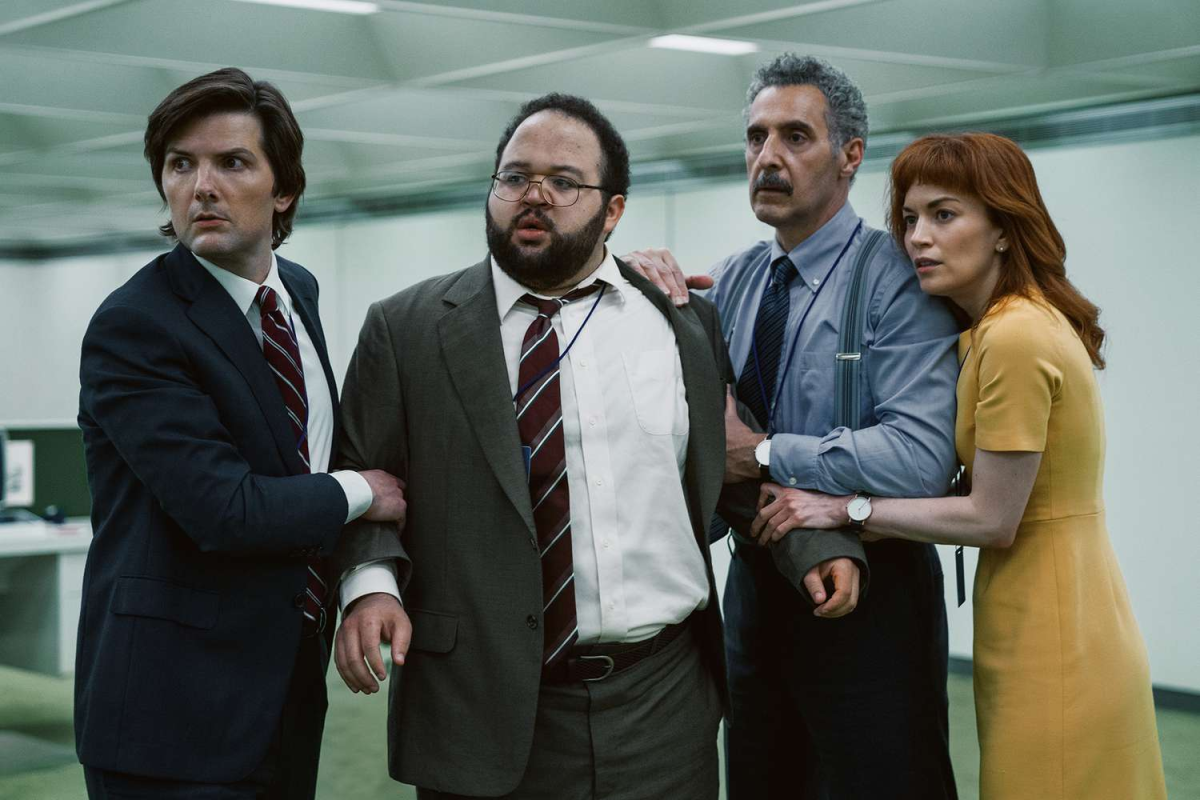1) American Insurance Building at Rutgers University: 15 Washington St.
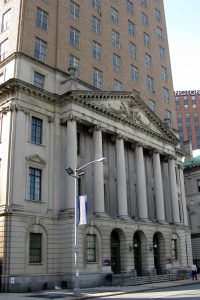
This 16-story neoclassical building was built in 1930 for the American Insurance Company by Newark natives John and Wilson Ely. One of the oldest skyscrapers in the city, the building is 327 feet tall and contains a grand hall with 20-foot ceilings and 15-foot windows. In 1977, the company relocated and donated the building to Rutgers University. The building served as Rutgers’ law school until the 1990s, and today, it houses graduate student apartments after a $83 million renovation in the 2010s.
2) Ballantine House: 49 Washington St.
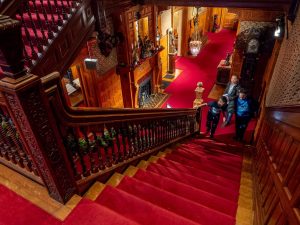
Built in the 1880s, the Ballantine House is a sweeping example of 19th-century splendor that has barely changed since its construction. At the time, ornate Victorian-style homes were popular along the streets of Washington Park. The building was designed for John and Jeannette Ballantine; John Ballantine was the president of Newark’s premier brewery. The three-story home features pink Philadelphia brick, five bays, granite columns, gilded wooden panels, and embossed leather hangings. The building is owned by the Newark Museum and is open to the public.
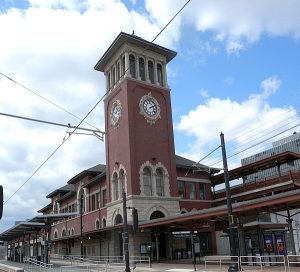
3) Broad Street Station: 25 University Ave.
The Broad Street train station was completed in 1903 with the designs of Frank Niles, who also designed the Delaware, Lackawanna, and Western Railroad. The station is three levels and contains modern and Renaissance-era elements. Noteworthy for its clock tower and red brick and limestone arches, the station can take passengers directly to New York. Renovations completed in 2006 updated the layout of the station and added a waiting area. The station will soon also be part of an Amtrak line between Scranton and New York City, which is expected to hit half a million passengers by 2030.
4) Eberhardt Hall: 323 Dr. Martin Luther King Jr. Blvd.
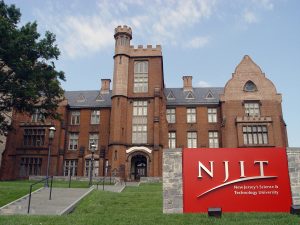
This gorgeous four-story building is made of red brick and is the face of NJIT’s campus. Prior to hosting administrative offices and meeting halls, the building was known as the Newark Orphan Asylum from 1857 to 1948. Afterwards, it was purchased by the Newark College of Engineering, known today as NJIT, and remodeled for its current purpose. Built in 1856 by architect John Welch, the building was the most advanced in the area during its heyday and featured hot and cold water, gas lighting, and even a rudimentary fire extinguishing system.

5) Essex County Courthouse: 473 Dr. Martin Luther King Jr. Blvd.
The Essex County Courthouse was designed by Cass Gilbert, who also designed the United States Supreme Court Building and several other historic buildings in Newark. The building features marble, granite, and limestone and is meant to evoke a sense of grandeur and majesty. Its modern renaissance style is complemented by eight Corinthian columns at the entrance flanked by a set of steps. On the interior, the building features ornamental plaster, murals, stained glass, millwork, stone floors, and balustrades.
6)Federal Square: 2 Federal Sq.
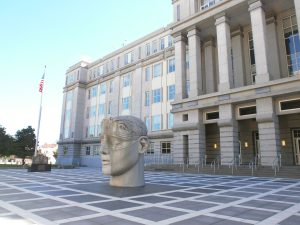
This area is a square among government offices such as Newark City Hall, the Municipal Court, the Peter Rodino Federal Office building, and the Martin Luther King Jr. Federal Building and Courthouse. Initially called Vroom Alley, the name was changed in 1931. Today, the area is one of the most walkable streets in Newark and is near amenities such as restaurants, schools, and features sculptures that revolve around the complex relationship between the law, government, and justice.
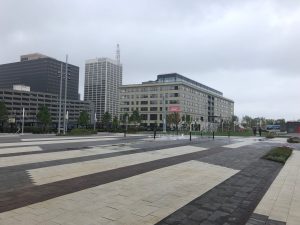
7) Mulberry Commons: Mulberry Street
Mulberry Commons is Newark’s newest park, situated among Newark Penn Station, Gateway Center, Prudential Center, and Government Center. The three-acre park is elevated from the street and provides a link between the Ironbound and Newark’s business district. With a $12 million investment from the City of Newark, the park is expected to generate millions of dollars in revenue for surrounding businesses. Mulberry Commons can also be used to host events such as parties, concerts, and gatherings.
8) Justice William J. Brennan Jr. Park: 465 Dr. Martin Luther King Jr. Blvd.

This park is near the Essex County Courthouse and is named for a Newark-born Supreme Court justice. Brennan was known as one of the most outspoken members of the court during his tenure; Justice Antonin Scalia called him “probably the most influential jurist of the 20th century.” The area contains several plaques and busts dedicated to figures who contributed to the legacy and culture of the city of Newark.
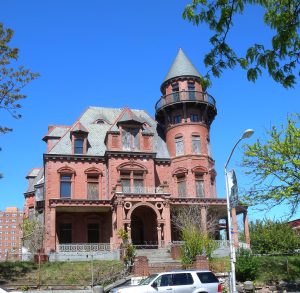
9) Krueger Mansion: 601 Dr. Martin Luther King Jr. Blvd.
This breathtaking five-story home, known as the “most elaborate home ever built in Newark,” was constructed in 1889 for Gottfried Krueger, the founder of a prominent brewing company. The mansion features dark red brick, castle-like turrets, an exterior staircase, and balcony. The interior also followed in the tradition of rich Victorian decorations, with an elevator, pipe organ, stained windows, and hand-carved embossing. The home was bought by Louise Scott in 1958, who operated a beauty school on the first floor and used the upper floors as her residence. The house is currently unoccupied.
10) Military Park: 51 Park Pl.
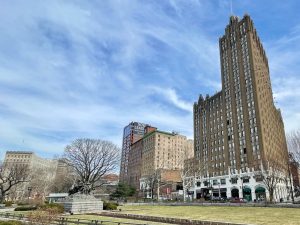
Military Park spans six acres and is one of the most historic areas of Newark. Serving as a training ground and campsite for soldiers since the Revolutionary War, the area now features several monumental sculptures such as the “Wars of America” monument by Gutzton Borglum, the sculptor of Mount Rushmore. Surrounding amenities include the New Jersey Historical Society, Military Park Building, New Jersey Performing Arts Center, and the Robert Treat Center. A Newark Light Rail station is also located opposite the park.
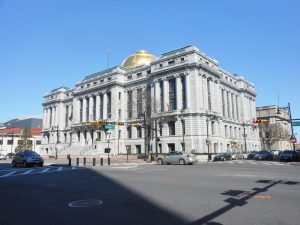
11) Newark City Hall: 920 Broad St.
Newark City Hall was built in the Beaux-Arts style by architects John and Wilson Ely in 1906 with a price tag of over $2 million. The building is five stories tall and consists of granite and steel, with plaster sculpting two stories tall at its base. The interior features mosaic flooring, bronze lamps, and a marble lobby. City Hall is known for its grand staircase and gold dome, visible from almost every high-rise in Newark. It also has stately glass skylights and inner atria.
12) Newark Public Library: 5 Washington St.
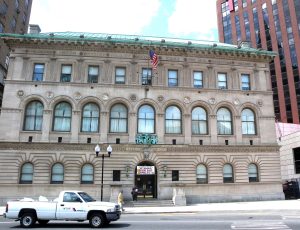
The Newark Library Association began in 1847 and initially required a monthly fee. In 1888, the free Newark Public Library was founded with over 10,000 books and an open-stack system still in use today. The building’s design was based on the Palazzo Strozzi, a palace from Italy, and featured arched windows, marble columns, wainscoting, and horizontal grooving. The library also serves as a museum, lecture hall, and gallery that displays artwork and discoveries.

13) Old Paramount Theater: 195 Market St.
Opened on Oct. 11, 1886 as Henry Clay Miner’s Theater, the theater was built with amenities such as an orchestra floor, a balcony, stage equipment, and luxury boxes. It could fit up to 1,200 attendees. The building is one story tall and features brick and terra cotta, with two bay windows. In 1916, the theater was converted to a movie theater with vaudeville events taking place. Although the theater is in disrepair, a 2014 grant was approved to construct residential buildings and retail space on the site.
14) Prudential Center: 25 Lafayette St.
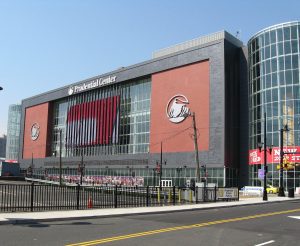
Not only is Prudential Center the home of the New Jersey Devils hockey team and the Seton Hall Pirates basketball team, it also hosts innumerable events such as graduations and concerts and can seat up to 18,000 fans. There are amenities such as lounges, luxury suites, and a 4,800-square-foot screen. The center was completed in 2007 and cost $375 million to build; in the following years, the surrounding area was developed further with stainless steel sculptures. The center placed 23rd in the world for Popstar’s 2013 list of top arenas.
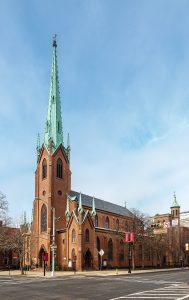
15) St. Patrick’s Cathedral: 91 Washington St.
St. Patrick’s Cathedral was initially created in 1850 for Irish immigrants who migrated to Newark after the potato famine. It is known as one of the most decorated churches in the Northeast and was marked for preservation by the city of Newark. The church has a 200-foot steeple, stained glass windows, and a 60-foot-tall ceiling. As the demographics of its attendees shifted, the church began to offer services in Spanish and now hosts a childcare facility and AIDS assistance center.














